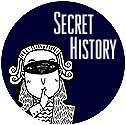
Comment
on this story |
 |

Remembering our favorite holiday
by Jack Neely
The four years after the war were a dark age of lynchings and occupation troops and assassinations and bankruptcies and impeachments of various kinds. On March 16, 1869, the uncertain times seem to express themselves in weather and fire: a violent storm of thunder and hail, and flames on Gay Street that consumed one of Knoxville's proudest blocks. Terrified tenants at nearby Lamar House packed, and some left. If not for the swift arrival of the Colored Fire Co.—and the thunderstorms of the evening—the worst fire anyone remembered could have destroyed the city. Then the rains came, and stopped. On the clear, damp morning of the 17th, it looked like spring.
That Wednesday morning, the sun came up on a different town. From windows and over the breezy streets was bunting, red, white, blue, and green. Shortly after 10 a.m., in the vicinity of Market Square, there marched a squad of 30 young men in unusual uniforms that seemed to snub the late war and, in fact, all American wars: they wore red caps and green jackets. They called themselves Fenians.
A brass band followed, then a color guard "carrying the standards of Columbia and Erin": The latter carried the motto, "God Save Ireland."
Then there came about 50 men on foot, the St. Patrick's Benevolent Society. They preceded a horsedrawn float with "32 young ladies representing the counties of Ireland." With them was the Maid of Erin and the Goddess of Liberty (some recognized the Maid of Erin as Mary Kennedy). There were more flags, then an uncountable number of Irish people marching on foot.
To show that it was a sanctioned event, City Council followed, all on a horsedrawn "omnibus," as if to give a municipal stamp to this procession; then the Fountain Fire Co., showing off their steam engine, "drawn by four fine horses." And, at the end, "a large number of citizens in carriages."
They proceeded down Crooked Street, long before it was less accurately known as Walnut, and made big loops through downtown, East Knoxville, North Knoxville.
The Press and Messenger reported, "The entire turnout was very creditable and elicited cheering from the crowds along the line of march," finally proceeding up Summit Hill, and under the intertwined U.S. and Irish flags at Immaculate Conception Catholic Church. All the paraders who could cram into the small stone chapel did so, to hear Father Michael Finnegan.
He commenced his oration in the third person: "Far, far away from their own green hills—far, far away from the scenes of childhood and of youth—far, far away from all they loved best and dearest on earth, they met to celebrate the Native Feast of Ireland, and to chant, as best they could, the glories of their saint...." Finnegan continued with a lengthy history of Ireland, from pagan days, through the Middle Ages, through the outrages of the English.
There may have been whispering in the church; there were rumors circulating in Knoxville that week that Pope Pius IX had died; they turned out to be unfounded. Finnegan finished with a "benediction of the blessed sacrament" and climbed into a barouche with Major Thomas O'Conner to recommence the parade. It continued wheeling around town, and ended at 2 p.m., four hours after it started, cheered at every turn. Maybe it wasn't an official holiday, but there's no record of what businesses did without their employees for the better part of that weekday.
That evening, "the beauty and chivalry of Erin, with many of the native sons and daughters of America, wiled away the happy hours till morning in the mazes of a dance." It was likely held at the Lamar House, the hotel at Gay and Cumberland, which would host extravagant St. Patrick's Day dances for years to come.
Few were so young they didn't remember the 1850s, when many Knoxvillians were frank about their suspicions about the "unfortunate" influx of the Irish. The anti-immigrant American Party was strong here, and both of Knoxville's antebellum newspapers had editorialized against the Irish. Rare references to St. Patrick's Day in Knoxville before the Civil War are throwaway descriptions of drunk Irishmen. To be fair, the antipathy in those days may have been fanned by the presence of exiled revolutionary and penal-colony escapee John Mitchel, the most famous Irishman ever to make his home in Knoxville. In the 1850s, he was a charismatic speaker fond of impressing his Knoxville audiences with the fact that the Irish were superior to native-born Americans, and that only the Irish could "save the United State from ruin" as a result of "the fanatical follies of natives."
The Press and Messenger editorialist of 1869 may have been remembering the bad feelings when he wrote, "Nothing calculated to mar the pleasure and harmony of the day occurred." He concluded, "our Irish fellow-citizens will long have reason to remember with pleasure the celebration of St. Patrick's Day, 1869."
As they did for many years thereafter. Knoxvillians, weary of the black-white conflicts, the Republican-Democrat conflicts, the North-South conflicts, threw it all up once a year and called themselves Irish. For years, in dances and parades sponsored by the Hibernian Society, St. Patrick's Day was a great excuse for a party. I don't know when we first woke to a March 17 that didn't feature green buntings streaming from windows and a downtown parade, but it must have been a grim and bitter day.

March 12, 2003 * Vol. 13, No. 11
© 2003 Metro Pulse
|





